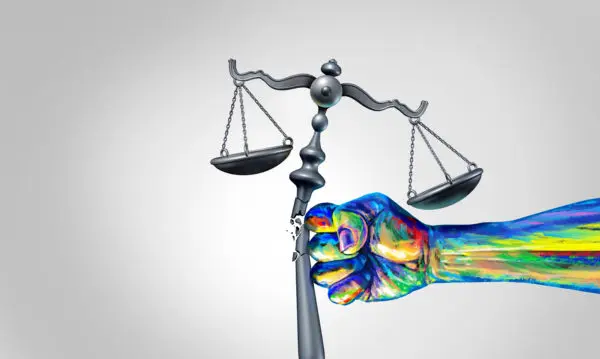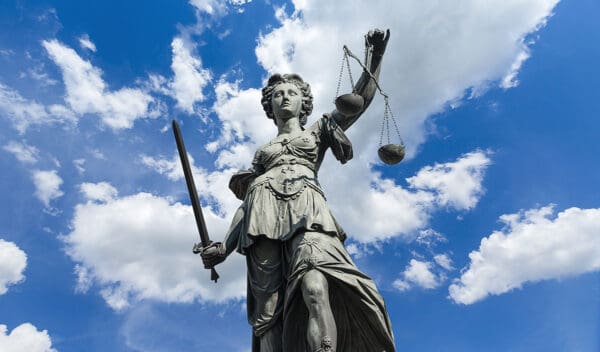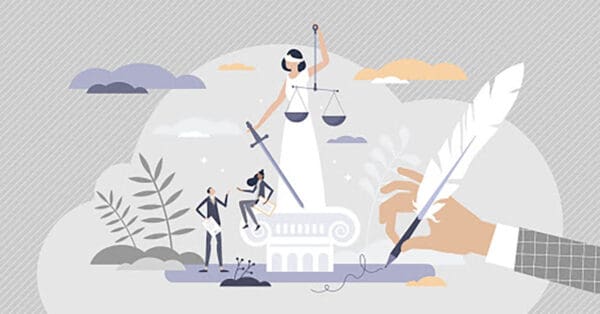As it currently stands, MDMA (3,4-methylenedioxymethamphetamine) is classed as a Schedule 1 drug. This determination is based, in theory, on the DEA’s assessment that MDMA is highly addictive and has a high risk of abuse —and that it has no medicinal value or therapeutic potential.
But, as is becoming increasingly clear through surmounting research, not to mention the FDA’s designation of MDMA as a breakthrough treatment, this psychedelic drug undeniably does have therapeutic potential. In fact, before being Scheduled in an emergency hearing in 1985, MDMA was being used professionally by therapists and psychiatrists who conducted trials and developed safety protocols around its use.
If it was being studied for medicinal use before 1985, why was it placed on Schedule 1, and not a lower Scheduling? Why was it necessary to not only ban MDMA recreationally but also to ban licensed practitioners from working with it safely in controlled settings? Cocaine, opioids, and even other amphetamines are all potentially dangerous drugs, but we still conceive of them as having medicinal value. Still, their research and development are not blocked in the way that MDMA and other Schedule 1 drugs have been.
Recent media stories are hailing MDMA as a wonder drug and cure-all for depression and PTSD, so it makes sense to wonder why MDMA was made illegal in the first place.
While some might point to health and safety as the reason MDMA was made illegal, it is helpful to remember that the federal government has the power to oversee drug policy. The illegality of MDMA is an issue of interstate commerce and taxation, not a matter of public health and safety. Keep this in mind as we further unpack why MDMA is illegal.
Why Did the DEA Schedule MDMA?
Before the passage of the Controlled Substances Act (CSA) in 1970, drug laws were a patchwork of statues crafted during different eras. Drug laws impact criminal justice and policing, pharmaceutical research and business, as well as medical insurance and mental health care. Drug laws are also interwoven with religious freedom, civil liberties, and the free market, not to mention family, community, and ourselves as individuals.
While some claim that it was the growing recreational use of MDMA at parties and raves that forced the DEA to act, one need only look to the long history of drug laws to gain a clearer perspective.
The Kefauver-Harris Amendment gave the FDA new regulatory powers
In 1961, Senator Thomas Dodd was working to enact strict controls on amphetamines and barbiturates, something the medical lobbying groups were not terribly excited about. During the same time, Senator Carey Estes Kefauver was working with the Antitrust and Monopoly Subcommittee to address price increases and marketing practices in the pharmaceutical drug industry. While Dodd and Kefauver were navigating pharmaceutical and medical lobbies, the United States was reeling from the thalidomide crisis, wherein a toxic drug that was heavily marketed to pregnant women had been distributed to doctors before receiving FDA approval.
The existing law allowed companies to go to market 30 days after submitting a new drug, even if the FDA had not finished processing the application. By the time the FDA determined there was not enough safety data on the use of thalidomide in pregnant people, the drug had already been delivered to doctors, who were already administering it as a cure for morning sickness to unsuspecting mothers. While Europe saw a “thalidomide tragedy” affecting 10,000 children, the United States saw less than two dozen cases of thalidomide toxicity — because the federal government quickly intervened. The public responded with the call for strict interventions on pharmaceutical drugs.
To ensure no such action could ever happen again, an amendment was added to the Food, Drug & Cosmetics Act. Known as the Kefauver-Harris Amendment, this 1962 Act established a framework that required pharmaceutical companies to prove both the efficacy and safety of a drug before going to market. This measure gave the FDA the teeth — and funding — to prevent companies from bypassing consumer safety concerns and enforce truth in labeling and marketing.
In short, the Kefauver-Harris Amendments to the Food, Drug, & Cosmetics Act required:
- Manufacturers must prove effectiveness before drugs go to market
- Manufacturers must report serious side effects
- Manufacturers must use expert evidence and well-controlled clinical trials conducted by qualified experts to prove the effectiveness
- Manufacturers must solicit informed consent for all people involved in clinical trials
The FDA gained new powers with the Kefauver-Harris Amendment, such as:
- The control of prescription drug advertising
- The control of establishing good manufacturing practices for industry
- The control of regularly inspecting manufacturing facilities and labs
- The control of generic drug naming
- The right to enforce laws using firearms, serving warrants, and seizing contraband
This was the first time that the federal government had ever granted any authority of this magnitude and scope, and it set the tone for the Controlled Substance Act of 1970.
The 1965 Drug Abuse Control Amendment protected interstate drug sales
Before the Nixon administration imposed the CSA in 1970, the Johnson administration passed the 1965 Drug Abuse Control Act. This legislation was specifically designed to ban the diversion and sale of pharmaceutical medications that were not already covered under existing laws.
The barbiturates, benzodiazepines, and amphetamines produced by pharmaceutical companies were increasingly being sold through underground networks, and these illegal sales were being blamed for several highway accidents involving truckers. In modern times, we might ask what sort of working conditions were compelling truckers to take dangerous amounts of amphetamines while driving. Back then, criminalization was still the primary response to issues of drug misuse.
Nevermind that in seven years of a reported 25,000 trucking accidents, only five were attributable to methamphetamine use. Still, the media worked to stoke public outrage. Despite any solid evidence, the trucking industry was named in the bill as a reason to pass the measure — as were youth and young people.
Past drug laws had relied on the Federal government’s ability to levy taxes, but the 1965 Drug Abuse Control Act relied on the Federal government’s oversight of interstate commerce to legitimize its authority to impose registration, inspection, and a record-keeping program for drug distribution.
Whereas the FDA was previously responsible for overseeing drug development and efficacy, this 1965 amendment extended drug law enforcement to federal officers, FBI agents, and U.S. Marshals. It also extended the power to arrest without warrants and seize assets related to drug production or trade. This was not yet a militarized drug war — yet. It was merely setting the stage for one. But, the amendments were not just about restricting drug trade.
Pharmaceutical companies were in a challenging position when it came to underground drug markets. On the one hand, drug manufacturers wanted to be allowed to go after those who produced and sold counterfeit drugs. On the other, proving that a competitor was in violation of trade-law would require manufacturers to invest a great deal of resources and reveal their manufacturing practices — and, more importantly, the extent of their price markups. The pharmaceutical lobby wanted oversight laws, just not over themselves.
Knowing that pharmaceutical lobbies had fought off previous attempts at financial oversight for years, legislators presented them with a compromise to guarantee passage of the 1965 Drug Abuse Control Act: the inclusion of a counterfeit drug provision. In exchange for new restrictions, the federal government would also make drug diversion a crime. This made possession of a prescription drug by anyone other than the patient a federal offense — unless the person was a medical professional acting in the course of their practice.
With the passage of the 1965 Drug Abuse Control Act, the Federal government established a precedent for using its power over interstate commerce to enforce drug laws. Never before had criminal law been attached directly to trade infringements.
How MDMA Was Made Illegal
Keep in mind that up until the Nixon administration passed the Controlled Substances Act in 1970, many therapists across the United States were already using psychedelic medicines in clinical practice, as well as in research trials. Mescaline, LSD, and MDA (a compound similar to MDMA) were the most commonly used psychedelic drugs for therapy during the decades leading up to this comprehensive drug ban. For many therapists, psychedelics were already an integral part of their practice and treatment offerings.
With the passage of the CSA, research of Schedule 1 psychedelics came to a crashing halt — but an underground network of therapists continued to experiment with psychedelic drugs to treat mental health conditions. Whispered among colleagues and shared through pre-established networks, protocols for safe and effective treatment emerged and took root among networks of people who use drugs.
At the same time, a steady stream of advocates began the long process of reforming drug laws. Meanwhile, chemists like Alexander “Sasha” Shulgin and his collaborator Ann Shulgin developed and studied the effects of uncommon psychedelics that had not been Scheduled (yet) under the CSA — including, of course, MDMA.
MDMA and the 1984 Comprehensive Crime Control Act
Depending on who you ask, MDMA was almost spared its fate as a Schedule 1 drug. The substance gained popularity after the passage of the CSA in 1970 because it was not Scheduled, was non-hallucinatory, and elicited profound feelings of well-being (euphoria) similar to its recently Scheduled cousin, MDA. While the mescaline-derived drug made its way through the music scene, therapists reported incredible success for its use in therapy. They were developing protocols for use in research, all while knowing that the Scheduling discussion would arise one day.
And this is where the hypocrisy of drug scheduling is perhaps most apparent. Despite decades of peer-reviewed research and months of expert testimony, in 1985, the DEA used its new emergency powers granted under the Comprehensive Crime Control Act of 1984 and placed MDMA on Schedule 1 as part of a highly controversial — and possibly illegal move. The details are complicated, and the media played a significant role in stirring public opinion around the issue. Still, there is one piece of evidence that might be most telling in hindsight.
There is no patent on MDMA
There is not currently a patent on MDMA, a drug initially manufactured back in 1912. While its therapeutic potential was being documented and explored by therapists, the drug was also being sold on the underground — legally, because it was not yet scheduled.
For years MDMA had been circulating as a social drug and was frequently used among young people at parties and raves. A skilled chemist can manufacture MDMA in a home lab, given they have access to the proper precursors. And with no pharmaceutical patent, no one was worried about it being illegal as a counterfeit medicine. The substance had evaded the initial CSA of 1970, and both the general public and therapists turned to this temporarily legal alternative.
Perhaps the most apparent reason for MDMA being placed under Schedule 1 comes from the testimony of an undercover DEA agent working in Dallas in 1984. In July of 1984, the DEA announced it would propose scheduling of MDMA as a Schedule 1 drug. Before the hearing, the network of therapists and researchers had been presenting evidence and testimony during many months of hearings — and they argued for placing MDMA in a different Schedule so that the known medical value could be verified and accepted.
In April 1985, an undercover DEA agent reported hearing about an “ecstasy ring” in Dallas doing things a little differently. Instead of a standard distribution operation, this network built a pyramid-style program, where every dealer would earn a portion of revenue from any dealer beneath them in the supply chain. Interestingly, the distributor whom the undercover agent purchased the drug from provided informational brochures about the new substance. The agent reported that an estimated 30,000 “ecstasy pills” were being sold in the Dallas area every month and that the national market must be massive.
This means, no company was experiencing hardship due to the therapeutic use of MDMA — at least not directly. But a medicinal drug without a patent? Who would have priority access or rights over research?
One month after the undercover agent’s testimony, during the middle of the MDMA Scheduling hearings, the DEA used its newly afforded emergency power and forced Schedule 1 — and then proceeded with the hearing for another five months. By the end of 1985, the committee confirmed their decision, but several years of appeals would follow.
Meanwhile, the war on young people who use drugs continued with new punitive measures and increased sentencing requirements. Then-Senator, now-President Biden, made harm reduction efforts like free water distribution and drug testing kits a potentially criminal offense. Many unnecessary deaths have occurred, inspiring parents to mobilize to amend this language so that young people are empowered to stay safe — even if they’re having fun.
MDMA Will Be Legal Someday
MDMA moves ever closer to being re-Scheduled, thanks in great part to the work of MAPS and their thousands of grassroots supporters who have worked to make MDMA a medicine since 1986. Without their efforts, MDMA would never have been designated breakthrough therapy status by the FDA, and action that signaled a shift not only in MDMA policy but in drug policy more broadly.
It is important to remember that the war on drugs still claims victims through poorly drawn legislation. While many might assume that it was the testimony from doctors warning about the effects of MDMA that compelled the DEA to issue an emergency scheduling, if we stop and consider both the timeline of the hearing, and the long history of U.S. drug laws, pharmaceutical companies, and drug development in the United States, we might recognize that money, not public health, is truly at the heart of MDMA prohibition. But perhaps through business models that prioritize public, not private benefit, MDMA may become the first pharmaceutical in an entirely different paradigm of mental health treatment.









